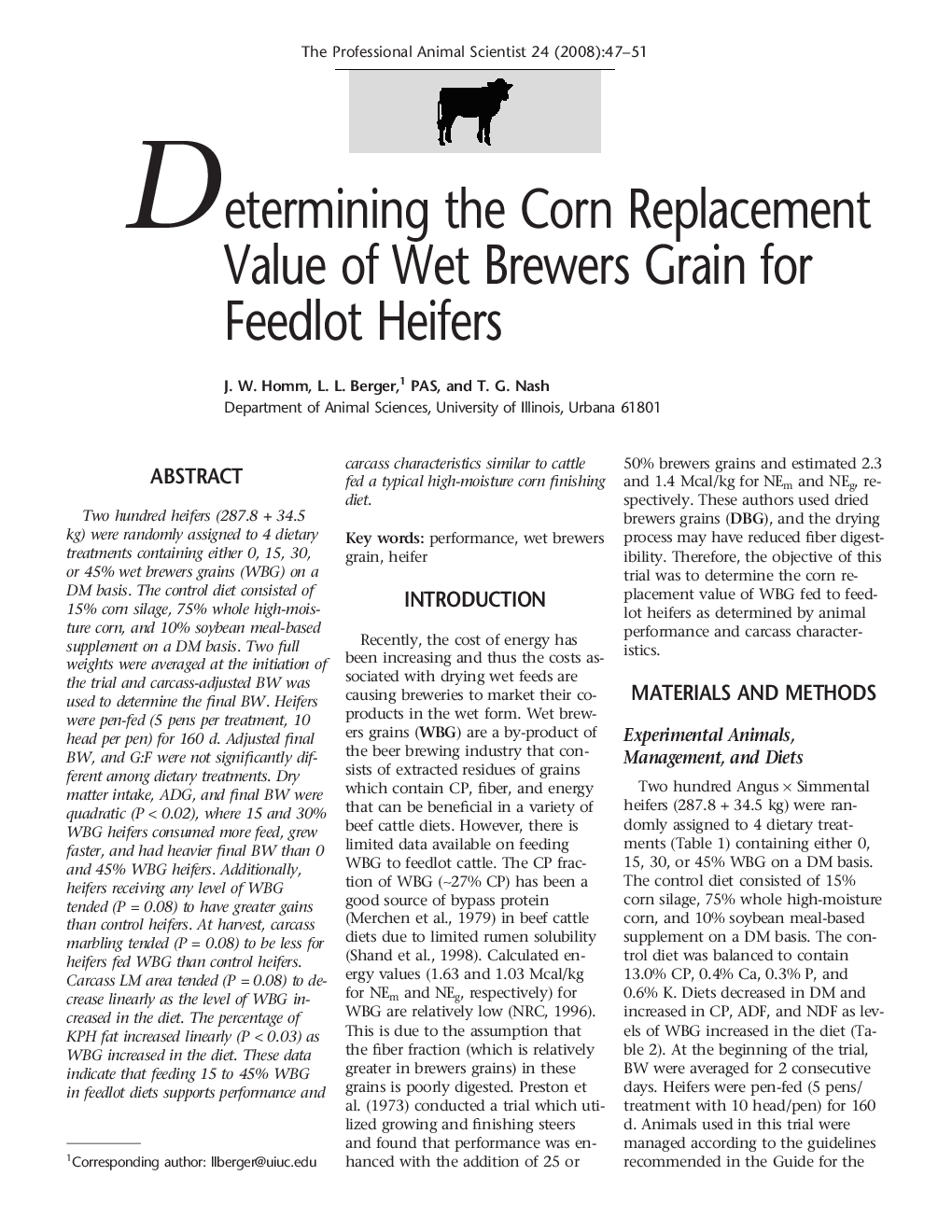| Article ID | Journal | Published Year | Pages | File Type |
|---|---|---|---|---|
| 2454513 | The Professional Animal Scientist | 2008 | 5 Pages |
Abstract
Two hundred heifers (287.8 + 34.5 kg) were randomly assigned to 4 dietary treatments containing either 0, 15, 30, or 45% wet brewers grains (WBG) on a DM basis. The control diet consisted of 15% corn silage, 75% whole high-moisture corn, and 10% soybean meal-based supplement on a DM basis. Two full weights were averaged at the initiation of the trial and carcass-adjusted BW was used to determine the final BW. Heifers were pen-fed (5 pens per treatment, 10 head per pen) for 160 d. Adjusted final BW, and G:F were not significantly different among dietary treatments. Dry matter intake, ADG, and final BW were quadratic (P < 0.02), where 15 and 30% WBG heifers consumed more feed, grew faster, and had heavier final BW than 0 and 45% WBG heifers. Additionally, heifers receiving any level of WBG tended (P = 0.08) to have greater gains than control heifers. At harvest, carcass marbling tended (P = 0.08) to be less for heifers fed WBG than control heifers. Carcass LM area tended (P = 0.08) to decrease linearly as the level ofWBG increased in the diet. The percentage of KPH fat increased linearly (P < 0.03) as WBG increased in the diet. These data indicate that feeding 15 to 45% WBG in feedlot diets supports performance and carcass characteristics similar to cattle fed a typical high-moisture corn finishing diet.
Keywords
Related Topics
Life Sciences
Agricultural and Biological Sciences
Animal Science and Zoology
Authors
J.W. Homm, L.L. PAS, T.G. Nash,
